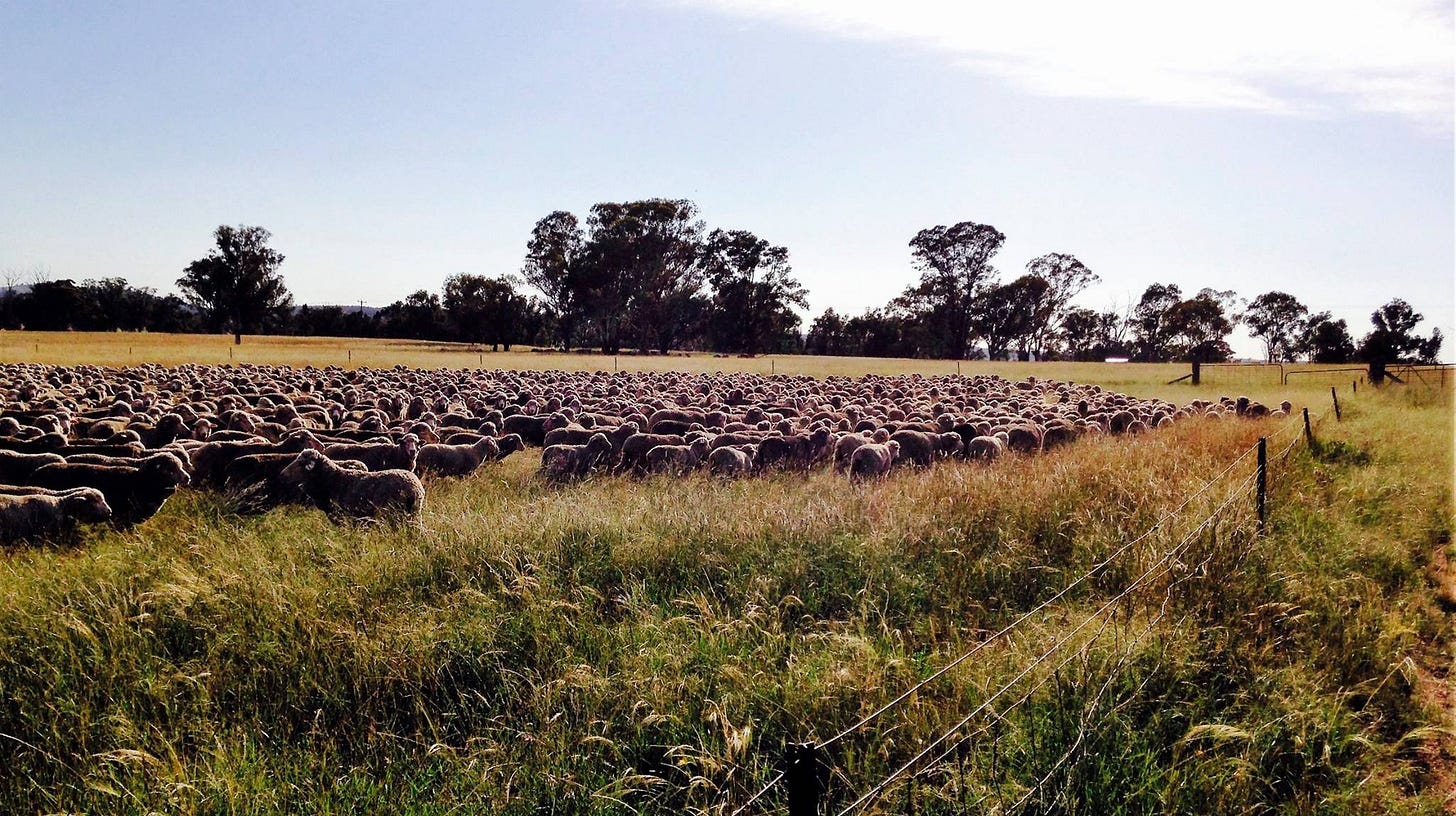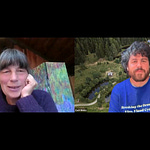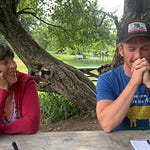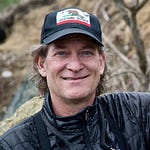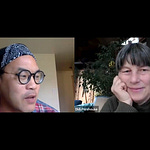This is a recording of a live mini class Colin and I offered to a group of farmers and other interested people around the world, in August of 2024, through the Land and Leadership Initiative. Colin’s full presentation with slides are in the video above. If you want to listen instead, here is the audio file.
"Pasture Cropping" and "Multi-species Pasture Cropping" are forms of 'perennial cover cropping' where annual crops are zero-till sown directly into perennial grassland after the grass has started its natural dormancy. Both were developed by award-winning Australian farmer Colin Seis, author of Custodians of the Grasslands.
The Seis family is one of the early pioneering families in the Gulgong district of New South Wales, Australia. They have been grazing merino sheep and growing cereal crops since the 1860s.
Colin Seis is the fourth generation, and stewards the 2000-acre property "Winona," which runs 4,000 merino sheep managed using holistic planned grazing. Cattle are also run on the property when seasons allow. The property is managed using methods that continually regenerate its grassland, soil, and farm ecosystem. This dramatically reduces farm inputs while producing up to 20,000 kg of wool and selling 1,500 sheep, as well as cereal grain, annually.
Enterprises on Winona consist of a merino ram breeding operation and native grass seed harvested from the property's native grassland. Five hundred acres of oats are sown annually using the 'pasture cropping' technique that Colin developed over 30 years ago. Colin also runs one of the largest kelpie working dog stud operations and sells dogs and pups to many countries like North and South America, Europe and Scandinavia, and all states of Australia.
'Pasture Cropping' can produce high-yielding crops and has been proven to restore landscape ecological health, restore native grasslands, improve pasture quality, improve soil nutrient cycling and increase soil carbon stores.
Colin further improved the method by developing 'Multi-Species Pasture Cropping' in 2011. This was done by using a group of up to 10 annual plant species. This mix of plants includes legumes, cereals, flowering plants, and species that add organic matter to the soil. The species mix produces excellent forage and grain and can also include vegetables.
The improved technique has been shown to restore pasture diversity, enhance ecological function, soil health, and soil carbon, and reduce insect attack while reducing pesticide and fertilizer use on farms worldwide.
'Multi-species pasture cropping' addresses many of the ecological problems associated with present-day agricultural practices. It has the potential to feed the increasing human population with nutrient-dense, healthy food while restoring grassland ecosystems and soil health on farms worldwide.
In addition to owning and managing Winona, Colin's dedication to farmer education support programs and inviting extensive scientific study of his practices have resulted in 'Pasture Cropping' being adopted worldwide. Because of this, there are now well over 3,000 farmers in many countries, managing an estimated one million hectares, using the technique to grow crops and restore grasslands and soil.
Colin has been awarded many times for his achievements during the development of pasture cropping and regenerative land management techniques. Some of these awards include;
Australian Conservation Farmer of the Year in 2005.
Australian Carbon Farmer of the Year, in 2007
Australian Green Agriculture and Innovation Award 2012 (GAIA), (which is awarded for leading contributions to soil health and sequestration of Carbon)
Australia's most prestigious farming and environmental award, the National Bob Hawke Landcare Award, September 2014.
The NSW regional achievement and community award 2015.
In August 2019, Colin was inducted into the 'Australian Carbon Farmer' Inaugural Hall of Fame.
In January 2015, the Australian newspaper, "Melbourne Weekly Times," called Colin a visionary and suggested him as one of the world's top 6 most influential farmers.


